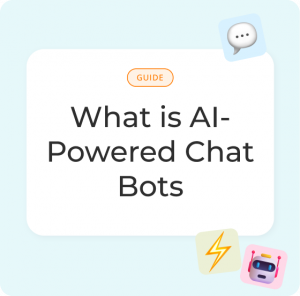15 Best AI Content Detector Tools to Use in 2026

Reader first promise. This guide explains how AI detectors work, where they fit in your workflow, and how to choose a tool that matches your risk level, content types, and budget. Use detectors as decision support, not as the final word.
What are AI Detectors?
AI detectors are software systems that estimate whether content was produced by a generative model. The most common use case is text analysis for essays, articles, and marketing copy. Visual and audiovisual detection is growing as synthetic images and videos become common in advertising and social platforms. Modern detectors analyze linguistic signatures, token distributions, semantic coherence, and other features that tend to differ between human and machine authored content.
In 2026, detection is not binary. Every output is a probability. Your goal is to combine these probability signals with policy, context, and workflow. That combination gives you defensible decisions without over relying on a single number.
Can AI generated text be detected? Find the best AI detection tools for accuracy and pricing in 2026
Yes, AI authored text can often be detected, especially at scale, but no tool is perfect. The latest language models reduce obvious artifacts and increase stylistic variety, which lowers the confidence gap between human and machine writing. Good detectors respond by blending multiple features, training on fresh samples, and reporting uncertainty clearly. Treat results as evidence to review. High confidence calls should prompt follow up, not punishment by default.
Pricing changes over time. Many vendors provide free tiers for light usage, with paid plans for higher volumes and team features. When pricing is mission critical, confirm the current rates on the vendor site before purchase. This article focuses on capabilities, strengths, and practical selection criteria that remain useful across pricing changes.
How AI detectors work
Detectors start with models trained to tell apart human and synthetic text. They compute features such as perplexity, burstiness, part of speech patterns, discourse markers, and document level coherence. Many tools also look at paragraph variability, idiom density, citation patterns, and formatting quirks that drift when text is generated or heavily paraphrased by a model.
- Language modeling and calibration. Scores are calibrated so that similar texts receive consistent probabilities across lengths and topics.
- Stylometry. Statistical descriptions of style help separate human voice from model defaults. Heavy human editing narrows this gap, which is why results must be contextualized.
- Forensics. Some platforms inspect metadata, drafts, and revision histories when available. For enterprises, this can include version control or CMS logs.
- Cross model comparison. Robust systems test a sample against multiple known generators to reduce false positives on niche styles.
- Multimodal analysis. Visual and audio detectors look for pixel level artifacts, frequency patterns, and compression signatures that differ from camera captured media.
How AI detectors differ from plagiarism checkers
Plagiarism systems compare content to known sources. AI detectors estimate origin even when the text has never existed online. These tools answer different questions and are complementary in academic integrity and publishing workflows.
| Question | AI Detector | Plagiarism Checker |
|---|---|---|
| Was this likely written by a model | Yes, probabilistic | No |
| Is this copied from a source | No direct database match | Yes, via comparison |
| Works on brand new text | Yes | Limited |
| Best for | Authorship risk and disclosure | Attribution and originality vs sources |

The Best AI Detectors Comparison Table
This snapshot summarizes common buyer questions. Verify live pricing and limits on the vendor site before purchase.
| Tool | Core Use Case | Free Plan | API | Text | Images | Notes on Strengths |
|---|---|---|---|---|---|---|
| QuillBot | Student and writer checks | Yes | No | Yes | No | Simple workflow and bundle with grammar and paraphraser |
| Winston AI | Education and institutions | Yes | Limited | Yes | Yes | Readable reports and classroom friendly dashboards |
| Proofademic | Academic manuscripts | Yes | No | Yes | No | Per passage scoring tuned for scholarly text |
| Pangram Labs | Developer integrations | No | Yes | Yes | Optional | API first with custom pipelines |
| Detecting AI | SEO and editorial ops | Yes | Yes | Yes | Yes | URL scans, metadata review, flexible reports |
| Monica | Personal assistant checks | Yes | No | Yes | Yes | One interface for generating and testing detectability |
| Undetectable AI | Risk scoring and rewrites | Yes | Yes | Yes | No | Focus on humanization and detection side by side |
| GPTZero | Universities and classrooms | Yes | Yes | Yes | No | Transparent metrics like perplexity and burstiness |
| Originality.ai | Publishers and SEO teams | No | Yes | Yes | No | Team audit trails and domain level reporting |
| Phrasly AI | On page quick checks | Yes | No | Yes | No | Lightweight extension for browsing sessions |
| Sapling | Customer support workflows | Yes | Yes | Yes | No | Inbox and ticket integrations |
| Copyleaks | Enterprise and education | Yes | Yes | Yes | Limited | Large scale and LMS support |
| Hive Moderation | Image and video detection | Yes | Yes | Limited | Yes | Strong visual and deepfake focus |
| Writer.com | Team writing suites | No | Yes | Yes | No | Governance and brand guardrails with detection |
| Grammarly | Everyday writing checks | Yes | No | Yes | No | Convenient plug in with basic AI detection |
Best AI Detectors to Identify AI Generated Content in 2026 (Reviewed and Ranked)
1. QuillBot
How to detect AI text using QuillBot
Open the AI detection tool, paste your text, and run analysis. QuillBot highlights passages with elevated AI likelihood and provides an overall score. It is straightforward for students and writers who already use QuillBot for paraphrasing and grammar.
AI text detection results
Good for general prose and short assignments. Confidence tapers on highly edited, long form content, which is typical for lightweight detectors. Use it as a quick triage before deeper checks.
Other AI tools in the QuillBot suite
- Paraphraser and rewrites
- Grammar and style
- Summarizer and citation tools
Pricing
Free tier for small checks. Paid plans are available for higher limits. Confirm current pricing on the official site.
2. Winston AI
How to detect AI text using Winston AI
Paste or upload documents. Winston produces a probability score and color coded highlights. Educators appreciate the class level view and exportable reports.
Results
Strong performance on academic tone, with readable explanations that help advisors and students understand flags.
How to detect AI images using Winston AI
Upload images to screen for synthetic patterns or manipulations. Use this for creative projects and assessment artifacts that include visuals.
Video tutorial
Most vendors provide short walkthroughs. Check the official tutorial library for up to date guidance.
Pricing
Free trial is common. Paid tiers add word limits, classroom management, and storage. Verify on the pricing page.
3. Proofademic
How to detect text using Proofademic
Paste a passage or upload a manuscript. The detector returns an AI probability and paragraph level heatmap that suits peer review and thesis submission workflows.
Results
Performs well on technical prose and references. Consider pairing with a plagiarism checker when source attribution is critical.
Pricing
A free tier supports short samples. Paid plans unlock larger uploads. Confirm live rates on the vendor page.
4. Pangram Labs
Pangram is API first. Engineering teams can embed detection in content pipelines such as CMS hooks, editorial queues, and form submissions. Expect JSON endpoints, webhook callbacks, and sandbox credentials for testing.
Pricing
Enterprise oriented with usage based quotes. Ask for a trial key to evaluate latency and throughput in your environment.
5. Detecting AI
How to detect AI text using Detecting AI
Paste text, upload files, or submit URLs to scan live pages. Reports include document level probability, section highlights, and suggested follow ups.
AI text detection results
Balanced on speed and explainability. Teams can export PDF or CSV results for audits.
APIs
REST endpoints for bulk scanning and continuous monitoring. Use webhooks to push outcomes into Slack or ticketing systems.
Other AI tools in the Detecting AI suite
- Image detector for generative or edited visuals
- Metadata inspector for document forensics
Pricing
Free daily allowance for small checks. Paid tiers scale limits and add API access.
6. Monica
How to generate text using Monica
Compose with the assistant and review detectability before publishing. This is useful when teams must disclose AI assistance or keep usage under a threshold.
How to detect AI text using Monica
Paste or import text. Monica returns a probability score with basic guidance on how to improve human authenticity.
Results
Suitable for personal and small team checks. For high risk decisions, pair with a second detector that provides detailed forensics.
How to generate AI images using Monica
Use image generation for creative drafts and then test detectability to understand synthetic signatures.
Pricing
Free tier available. Premium increases limits and features. Verify current rates on the site.
7. Undetectable AI
How to detect AI text using Undetectable AI
Submit content for a risk score. The interface shows where text may look machine generated and suggests edits to raise authenticity.
Results
Effective for marketers who want content that reads more like a human draft. Keep brand voice and editorial standards in the loop.
How to generate text using Undetectable AI
Optionally generate or rewrite copy and then retest. Treat output as a draft that still needs subject matter review.
Video tutorial
Use official videos for the latest interface. Features evolve often.
Pricing
Free trial with paid tiers for volume and API. Check the live pricing page.
8. GPTZero
How to detect AI text using GPTZero
Paste text or upload files. GPTZero reports metrics like perplexity and burstiness along with an overall verdict. Many educators value these transparent indicators.
Results
Strong classroom adoption. Use cohort reports for course level monitoring while respecting student privacy policies.
Pricing
Free usage is common for light checks. Paid plans add higher limits and API access. Confirm on the vendor site.
9. Originality.ai
How to detect AI text using Originality.ai
Paste text, upload multiple files, or scan domains. Editors can assign scans to writers and maintain a complete history of checks for compliance.
Results
Popular with publishers and SEO teams because of team management, audit trails, and flexible reporting.
Video tutorial
Look for short guides that demonstrate domain scans and team roles. Evaluate the dashboard with a small pilot.
Pricing
Usage based with team features. Review current pricing tiers and overage rules before rollout.
10. Phrasly.AI
How to detect AI text using Phrasly AI
Install the extension, highlight text, and run a quick check. This is ideal for spot checks while researching or editing in the browser.
Results
Great for short form. For long reports or manuscripts, switch to a dashboard tool that supports large uploads.
Pricing
Free basic extension with optional upgrades. Verify current limits on the product page.
11. Sapling
Detection inside service and sales workflows helps teams monitor AI use in tickets and emails without leaving the inbox. Consider this if you run large support queues.
12. Copyleaks
Enterprise friendly with LMS integrations and APIs. Combine plagiarism and AI detection for comprehensive academic integrity checks.
13. Hive Moderation
Focus on images and video. Useful for ad verification, user generated content, and platform safety teams that need synthetic media screening.
14. Writer.com
Part of a broader writing platform that includes governance, style guides, and terminology. Detection supports teams that must document AI usage policies.
15. Grammarly
Convenient plug in for everyday authors who want a quick AI likelihood check alongside grammar and clarity suggestions. Use a second tool for high stakes calls.
Why do you need AI detectors?
Detectors support integrity, transparency, and brand trust. In education, they help faculty spot drafts that merit conversation. In publishing, they help editors uphold contributor agreements and disclosure rules. In SEO, they help teams balance efficiency with originality and audience value. In enterprise, detectors add a policy layer that enables AI use without risking compliance.
- Academic integrity. Encourage learning by discussing flagged passages and revision habits.
- Editorial quality. Verify authorship for bylined articles and thought leadership.
- Brand and legal risk. Reduce exposure to undisclosed synthetic content in ads or investor communications.
- Procurement and outsourcing. Screen vendor deliverables at intake and contract renewal.
How we tested and ranked the best AI detectors
Accuracy
We mixed equal sets of human and machine texts across news, academic, marketing, and technical categories. We tracked false positives and false negatives separately, since they affect users differently. The most practical tools offered explanations, not just a single score.
Speed
We measured average time to evaluate 1,000 words. For enterprise use, we also tested batch scans and domain crawls to observe throughput and queue behavior during peak hours.
Usability
We looked for clear reports, accessible color palettes, exports, and SSO. Education buyers favored class views and privacy friendly storage. Editors favored URL scanning and comment level highlights.
Supported formats
We prioritized tools that handle DOCX, PDF, pasted text, and URLs. For multimodal needs, we included visual detection that identifies synthetic or manipulated media.
Pricing and value for money
We compared limits per dollar, API availability, audit logs, and team governance. Where pricing varies by region or feature, we recommend confirming the latest tiers directly with the vendor.
Tips for choosing the right AI detector
- Map risk to features. High risk use cases need audit trails, team roles, and exportable evidence.
- Test on your samples. Upload real documents from your domain to calibrate expectations.
- Use more than one signal. Pair detection with plagiarism checks, draft histories, and style reviews.
- Plan disclosures. Create a simple policy that explains allowed AI assistance and how to cite it.
- Re evaluate quarterly. Models and detectors evolve. Schedule short validation rounds and update thresholds.
Frequently Asked Questions
1. What is an AI detector and what does it do
An AI detector estimates whether content likely originated from a generative model. It outputs probabilities and often highlights segments with higher model like patterns. Use it to guide reviews, not to make unilateral decisions.
2. Which is the most accurate AI detector in 2026
Accuracy depends on your domain, languages, and document length. Tools that update training data frequently and report uncertainty clearly tend to perform best across categories. Always validate with a pilot project before rollout.
3. Are AI detectors 100 percent reliable
No. Detectors offer statistical evidence. Combine their scores with context, drafts, and policy review. Avoid penalties based only on one score.
4. Can AI detectors be tricked or bypassed
Paraphrasing, style transfer, or heavy human editing can lower detectability. Strong governance and layered checks address this. Ask for sources, drafts, or prompts when integrity matters.
5. What is the best free AI detector
Several tools provide free tiers that are ideal for light usage and classroom experiments. For professional publishing and enterprise audits, paid plans are recommended due to higher limits and compliance features.
6. Do AI detectors work on images and videos
Some tools include visual detection for synthetic or manipulated media. Coverage differs. Run tests on your image or video types to validate performance before adopting.
7. Can AI detectors identify plagiarism
Plagiarism detection and AI detection solve related but different problems. Use both in academic and publishing workflows that require originality and transparent authorship.
8. Who uses AI detectors and are they legal
Educators, editors, marketers, compliance teams, and platform safety teams use detectors. They are legal when used in line with privacy, academic, and employment laws. Publish a clear policy for your community.
9. What is the future of AI detection
The future is hybrid. Expect combinations of linguistic signals, platform provenance standards, and cryptographic content credentials. Disclosures will become normal for professional publications and classrooms.
10. Can a university prove you used AI and what is the 30 percent rule
Universities typically rely on multiple indicators such as draft histories, interviews, and detector scores. A few institutions permit limited AI assistance with thresholds that vary by course. Always follow the policy in your program and cite assistance when required.
Final words. AI detection is a moving target. Select a tool for your risk profile, validate with real samples, and backstop detection with policy and process. The goal is better decisions and better work, not a single perfect score.
About Oscar Chat
Oscar Chat is an all-in-one AI communication platform that helps businesses engage customers, automate support, and boost conversions without code. With Oscar Chat, you can build AI chatbots that understand your brand voice, connect live with visitors, and unify all conversations from Messenger, WhatsApp, Telegram, and email in one place. Its no-code popup builder and messaging widget make it simple to capture leads, answer questions, and personalize every interaction in real time.
Whether you’re running an e-commerce store, SaaS company, or service brand, Oscar Chat enables 24/7 engagement with human-like precision—driving higher satisfaction, faster response times, and stronger sales. Start with Oscar Chat today and see how intelligent automation can sound just like you.






